Notes
World Cup Optics: Mario Tama on Brazil Vs. Brazil
Sometimes the best ideas are the ones that are elegantly simple.
Up until I saw these photos, I automatically assumed that the political and the “social conscience” side of the World Cup story, which has been so much in the foreground, would completely give way to those shining FIFA temples. Surely the presence, the moral symbolism and the visual counterweight of the favela (or the striking municipal worker) would drop off the media radar once the games began, as the partying and the international rivalries and the celebrities and the mega-brands (consumer products and services, as well as the rock stars on the field) came online.
In the past few months, and especially the past few weeks, the World Cup coverage has indeed been schizophrenic. There has been intense coverage of public disaffection detailing how, and how far the Brazilian citizens have come up short in terms of the tournament’s cost-benefit ratio. At the same time, soccer, or futbol, is the world’s game, and just as much coverage (in anticipation of one of the world’s purest one month highs) has involved the standard fun and games.
…Which is to say that what Mario Tama achieves in these photos is quite profound. What he’s done is to capture both narratives and the tension between them, in the most brilliant light and within the very same frame requiring each to reflect on the other. The photo above does exactly what I’ve described, implying dialogue and, certainly, tension, too, between the favela as moral equal as opposed to the favela as simply the first stop and a tragically-beautiful warm up act.
There are twenty-five photos in the wonderfully edited photo-feature at TIME, one of the photos we looked at quite closely here at BagNews (Concern and Eroticism: Wire Services Warm Up for Brazil and World Cup back on May 18th.) Impressively, the images address many themes, including the physical and visual fallout of the government gashing and severing impoverished neighborhoods to make way for the games. I’m just concentrating on the photos that literally juxtapose the soccer stadium with the favela, however, and those citizens that likely won’t be crossing the turnstiles.
There is no way to understand or appreciate this photo without the caption. This one reads:
A boy looks out for a fallen kite as kids fly kites in the Mangueira favela which overlooks famed Maracana Stadium on June 5, 2014 in Rio de Janeiro.
Besides the biting contrast of the futuristic white oval with the rust-stained concrete walls and the torn away chain link fence, what’s brilliant is the rest of the action. There, before this kid, is what you’d imagine as every boy’s dream (soccer in Brazil very much a boy’s thing) — the sports event of a lifetime, Brazil the favorite, no less, not just in your backyard but in front of your eyes. And yet, in the most political statement one could make, the focus of the kid is not on futbol or the city, but something, in his own community, he could launch himself.
And then there’s this shot, the most editorial of the three. The caption reads:
A trash fire burns due to the lack of government assistance of trash disposal in the Mangueira favela, which overlooks the famed Maracana Stadium on June 5, 2014 in Rio de Janeiro.
It’s a jarring picture — if just for expressing the looming power and impact of the stadium by leaving it out. From the photo, we imagine how glorious and bathed in light that stadium must be. But it’s ominous, too. Although sunken, it still seems responsible — absorbing all the energy — for these children, and the waste, remaining in the shadows. Even further, given all the distress, one could imagine it’s the stadium on fire.
The stadium aside, I wanted to say a few words about this shot, and how much and well it mines the same political dichotomy. This caption reads:
A boy shows off his soccer skills in the Complexo do Alemao pacified favela on March 23, 2014 in Rio de Janeiro.
Too often over the past few weeks (with this, just yesterday, as a glaring example), photos of kids playing soccer in the favelas have felt like an utter distraction from the reality at hand (for us and the photo subjects), not to mention the idea (as we explored here, too) that soccer is the opiate of the masses. This is what makes the ball sitting stationary in front of the kid’s face so brilliant and insurgent. Soccer makes me blind. Soccer turns me into a civic mascot. Soccer prevents me from really being seen.
Given the tension involved, I’m curious if Tama is actually onto something bigger. What I’m wondering now is whether these images serve as a model, or a predictor, perhaps, of the upcoming coverage. Instead of the social stories functioning as due diligence, as preamble and warm up act, as the vegetables you had to consume before you can have your desert, imagine something more integrated. What if the coverage over the next four weeks did simultaneous justice to both the thrilling sports spectacle and the still present pain, social cost and the opportunity lost? What if the spectacle and the social conflict could actually share the same frame?
See the entire twenty-five photos at TIME here.
(photos: Mario Tama/Getty Images. photo 1 caption: Rio’s iconic Maracana Stadium is lit at dusk behind a favela on December 10, 2013 in Rio de Janeiro.)
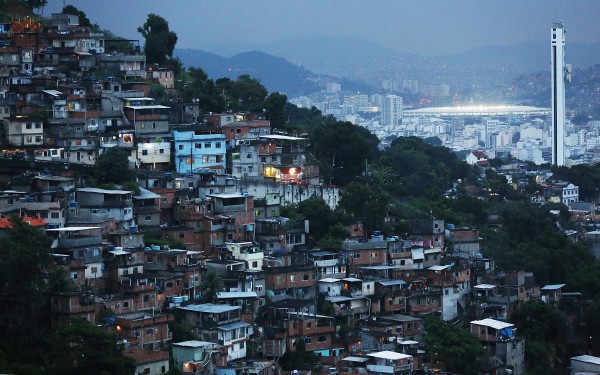
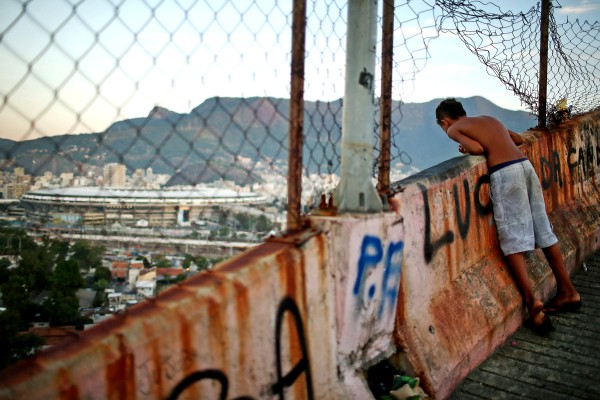
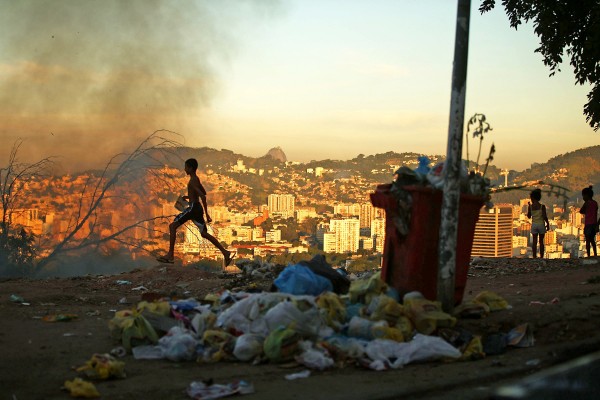
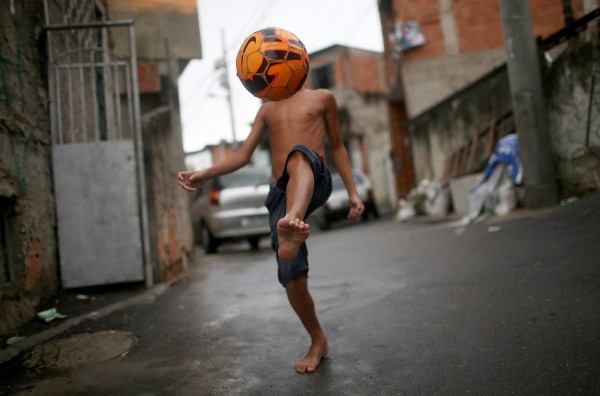
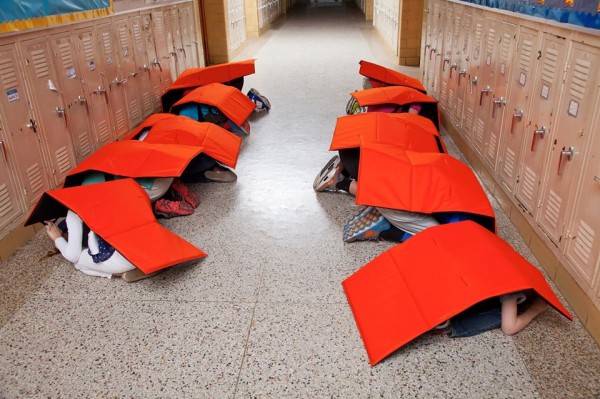
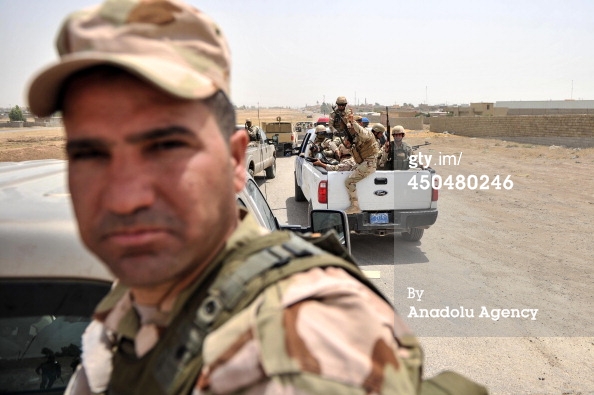
Reactions
Comments Powered by Disqus